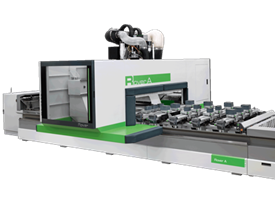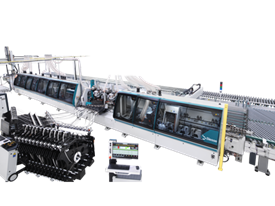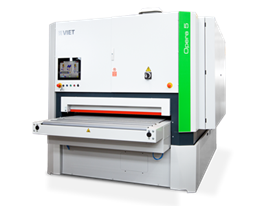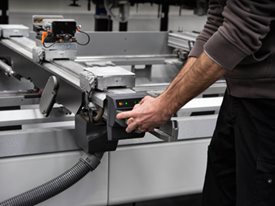An uncommon reason to invest in automation
At the center of your thinking about what’s next for your company is the topic of automation. Whether it’s your next CNC machine, new engineering software, an ERP system or an Industry 4.0 initiative, automation in one of its variant forms, will be a key consideration in your planning and search.
Implied or implicit, automation is a technological path to improving the productivity of wood industry companies. I’m not just referring to operational productivity, but also to the revenue productivity of the business. Revenue productivity is a financial measurement that is increased by gains in operational productivity. I will expand on this idea and its importance below.
Generally, the operating productivity gains achieved through the implementation of automation are obvious, particularly during the discovery and specification phases of a machinery purchase for instance. In this context, the argument for automation is usually the third definition: the replacement of human labor by mechanical systems.
The goal is not to displace our workers with automation. Indeed, in recent years, industry employment levels have actually been on the rise. Yet, for reasons of safety, capacity, reliability, capability, consistency in results, but more importantly because of the availability and cost of new workers, the goal is to optimize the utilization of our limited workforce.
The argument for automation though, is deeper than workforce optimization; it is about overall business performance. The chart below presents at once both a disturbing reality, as well as a latent, but very significant opportunity for wood products manufacturers.
Wood products manufacturers on average, generate revenue per worker at about half the rate of companies from all other manufacturing segments. According to the ASM (Annual Survey of Manufacturers) of the U.S Census Bureau, in the 5-year period between 2012 through 2016, wood industry companies generated revenue at a rate less than half that of all manufacturers combined. In 2016, the wood industry generates only $211K in revenue per employee compared to $481K.

Also interesting is the fact that wood industry companies invest in payroll as a percent of revenue 20.6% compared to 12.0% by all companies. So, we spend more on wages to generate less revenue per capita. Expressed differently, for every dollar invested in payroll, wood industry companies generate $4.86 in revenue compared to $8.32 for all manufacturers.
So, what would explain the poor performance in revenue generation? In a word, productivity. Productivity is improved through the automation of our processes, in the front-office as well as the plant floor. The goal again is not to displace workers, but to produce more from those we employ. The chart below suggests one possible explanation for the disparity in revenue production: technology investment.

If we reduce the labor required to produce the information that drives the plant floor, would we not also increase the capacity as well as the output of our factory without necessarily and proportionately increasing the number of workers? If we increase the output of every worker in our business, do we not then increase the revenue per employee or the revenue per dollar invested in payroll?
The answers to these question is simply an emphatic, yes. The question is how. Here’s the point: there’s a connection between revenue productivity and technology investment. As the chart above shows, technology spending is not about spending more dollars, its about spending those dollars on tools that improve productivity. The wood industry doesn’t need to spend more on technology, it needs to invest more wisely on technologies that improve productivity, including revenues.
Investing in mechanization, robotic or an MES (manufacturing execution system) will optimize our existing human resources and wages invested. Increasing revenue production without increasing headcount will effectively increase the technology spending per capita. In other words, the problem is not one of spending, but productivity.
If you are planning an automation investment in technology (hardware, software, or systems) you should think carefully about your real goal and measure your performance against the goal. The goal is not to automate the plant floor, but the business. The goal is to create a sustainable, profitable company. Your challenge is to choose automation that will achieve that end. And, this is your uncommon reason to invest.
If you want to further explore automation or need help assessing your performance, I am meeting with industry leaders at a conference at Biesse America, in Charlotte, NC on November 6, 2019: Automation Event
For more information, you can reach me at dshultz@jemoran.com or 608.279.8089



.png)






 Worldwide
Worldwide
 Italia
Italia
 United Kingdom
United Kingdom
 Россия
Россия
 France
France
 中国
中国
 Asia
Asia
 Deutschland
Deutschland
 España
España
 Schweiz
Schweiz
 North America
North America
 India
India
 Australia & New Zealand
Australia & New Zealand
 Türkiye Cumhuriyeti
Türkiye Cumhuriyeti
 Middle East
Middle East
 Brasil
Brasil
